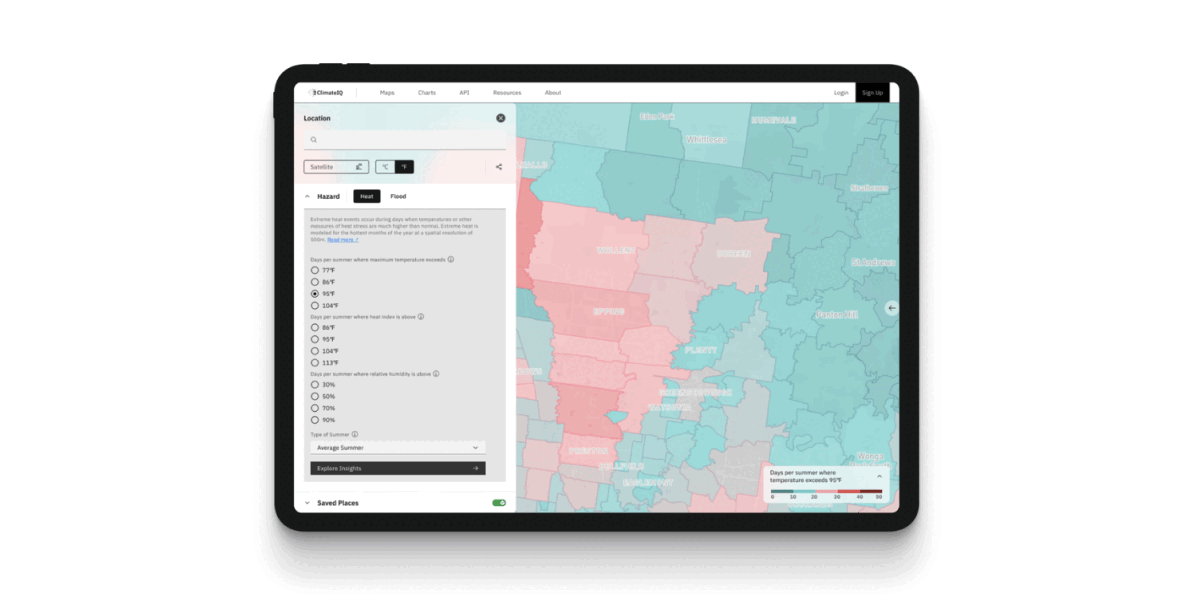Climate Week NYC 2024: AI meets climate action
For 14 years, Tryolabs has been helping companies transform their vision into reality through customized AI solutions. In August 2024, we took a bold step forward by launching our AI for Good vertical, formalizing our commitment to projects that create positive societal impact.
This isn't new territory for us. Since 2020, we've been actively working on initiatives that leverage AI for environmental and social good, including:
As Director of AI for Good at Tryolabs, I'm constantly exploring the intersection of AI and society's most pressing challenges. Climate Week NYC (September 22-29, 2024) offered a unique opportunity to engage with climate scientists, policy makers, and AI experts in one space.
In this post, I'll share five insights from the event that highlight how AI is reshaping climate action. Each section includes links for those who want to dive deeper into these topics.
Ready to explore? Let's go! (Read it with Mario's Star Theme playing in the background).
The power of storytelling
My Climate Week journey began unexpectedly with a movie. As part of the Climate Film Festival I attended a screening of Common Ground, an experience that challenged my understanding of climate solutions.
The festival itself proved three interesting points. First, art demonstrates its unique power to simplify complex topics and inspire action. Second, the undeniable influence of star power: yes, even I found myself drawn to the film partly because of Jason Momoa's involvement. But the third insight was the most surprising: the critical role of soil health in our climate future.
Common Ground revealed how tillage, the traditional practice of turning over topsoil, is actually detrimental to soil health. More importantly, it highlighted how healthy soil isn't just about better crops; it's a powerful tool for carbon sequestration. The film transforms what might seem like a mundane topic into a fascinating exploration of one of our most overlooked climate solutions.
Inside scoop: I recently saw The wild robot at a screening in Montevideo. I loved it, and I would also recommend that you go and watch it. San Francisco is shown once in the movie, did you notice something?
Building bridges between AI and climate action
Climate Change AI (CCAI) shaped much of my week through two pivotal events. Founded in 2019, CCAI represents a volunteer-driven coalition of academics and industry professionals working to harness AI's potential for climate solutions.
Worth noting
They created a comprehensive white paper, now available as an interactive summary that maps AI applications across various climate sectors. It's become an invaluable resource for anyone looking to understand the intersection of AI and climate action.
Beyond documentation, CCAI fosters community through:
- The "Tackling Climate Change with AI" workshop series at NeurIPS and ICLR
- A hybrid summer school program combining virtual and in-person learning
- Regular events that bring together diverse stakeholders in the field
For those looking to enter either the AI or climate space, CCAI's resources provide an excellent foundation.
Inside track: I'm co-leading the organization of Tackling Climate Change with Machine Learning at NeurIPS 2024. We'd love to see you there!
Crowdsourcing biodiversity data through citizen science
One of the most innovative solutions I rediscovered at CCAI tackles a fundamental challenge in AI: data collection. While many sectors struggle with data gathering, biodiversity monitoring faces unique hurdles, you can't simply deploy experts worldwide to track species movement.
Meet iNaturalist, an elegant solution to this complex problem. The platform transforms everyday citizens into data collectors, allowing them to upload species sightings for expert validation. This crowdsourcing approach has created one of the largest biodiversity datasets available.
 Source: iNaturalist
Source: iNaturalistWhile not originally an AI platform, iNaturalist is now leveraging Machine Learning to:
- Generate species distribution maps
- Compare citizen science data with expert observations
- Track species movement patterns in response to climate change
This evolution from a citizen science project to an AI-powered monitoring system demonstrates how innovative approaches to data collection can unlock new possibilities in climate research.
Democratizing climate data collection
Data emerged as a central theme in almost every AI-related conversation at Climate Week. The challenge isn't just about having data, it's about having the right data in the right format, while navigating complex ethical considerations.
Let me illustrate with an example from the energy sector: While we need detailed information about electrical grids for climate solutions, this data is often restricted, as power grids are classified as critical infrastructure. This highlights a broader pattern where valuable climate data can be difficult to access or share.
The data challenge extends beyond accessibility. Understanding how climate change affects people presents a challenge: researchers need detailed information, but individuals are often (and rightfully) hesitant to share personal data. This creates a complex tension between research needs and privacy concerns.
Perhaps most fundamentally, collecting quality data is time-consuming and expensive. We can't rely solely on volunteer efforts to gather the comprehensive data needed for climate action.
This is where Lacuna Fund comes in. Launched in 2020, it provides resources to social entrepreneurs and scientists in low and middle-income countries to create datasets addressing urgent problems in their communities. This approach ensures that data collection efforts are led by and serve the communities most affected by climate challenges.
Modeling urban climate impacts
Part of my Climate Week experience was attending events that caught my attention without knowing exactly what to expect. This was the case when I walked into The New School’s campus in downtown Manhattan, drawn by an event description that mentioned Climate and AI.
They introduced me to ClimateIQ, a dashboard that visualizes how heatwaves and flooding events affect different parts of cities (currently focused on New York). What makes this interesting is how it reveals the uneven impact of climate events within a single city: flooding affects communities near water sources and low-lying areas differently than those on higher ground, while heatwaves hit harder in areas lacking greenery and shade.
Traditionally, understanding these patterns required complex physical simulations—fluid mechanics calculations demanding extensive data about street layouts, elevation maps, building locations, and weather forecasts. The cost and complexity limited their use to only well-funded projects.
ClimateIQ aims to solve this in two ways: creating an accessible interface for planners and social workers, and—here's where AI comes in—training models to replace these expensive physical simulations, potentially making it easier to deploy in new cities.
 Source: Climate IQ
Source: Climate IQWhile promising, I wonder about its applicability in developing nations. Even without complex simulations, the model needs highly accurate city data that might not be available in many places. Nevertheless, it's an exciting project to watch as it evolves!
Worth noting
Recently, we developed a similar dashboard for UNICEF to visualize how heatwaves are affecting children around the globe.
Putting AI to work in your community
Throughout this post, we've explored various ways AI is being used to tackle climate challenges, from citizen science platforms like iNaturalist to urban climate modeling with ClimateIQ. But meaningful climate action often starts at the local level, and this is where you can make a difference.
1.Learn about tillage
Let's start with something seemingly simple: Is tillage used in your city or region? What is the average carbon concentration in the soil growing your food?
2.Find available sources
These questions might sound straightforward, but finding answers often requires navigating through official documents, government websites, or dense PDF reports. This is exactly the kind of scenario where AI could help bridge the gap between available information and accessible knowledge.
3.Use AI to process the documents
Can you use AI tools to process this information and create a concise summary (or even better, a structured dataset) for your region? Whether you succeed in finding the data or discover interesting challenges along the way, we'd love to hear about your experience.
4.Share your findings
Share your progress with us at aiforgood@tryolabs.com, your insights could help shape how we approach similar challenges in other communities.
AI isn't just a tool for business optimization, it's a powerful ally in addressing our world's most pressing challenges. From soil health to urban resilience, from biodiversity tracking to climate data democratization, the intersection of AI and climate action is rich with possibilities.
As we continue our journey in AI for Good, we're excited to collaborate with more organizations and individuals who share our vision of using technology for positive impact. Whether you're a citizen scientist, a climate tech innovator, or someone curious about making a difference, there's a role for you in this growing movement.
Let’s work together to turn climate data into climate action.
Terms and Conditions | © 2025. All rights reserved.